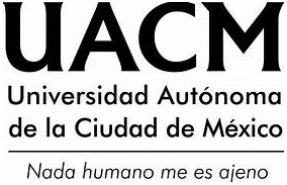EL ARTE COMO UN NUEVO PENSAR: LA CONCEPCIÓN NIETZSCHEANA Y HEIDEGGERIANA
DOI:
https://doi.org/10.29092/uacm.v2i4.511Keywords:
Nietzsche, Heidegger, arte, cuerpo, verdadAbstract
El arte es el camino que toman tanto Nietzsche como Heidegger para alcanzar nuevos valores. Nietzsche sostiene que el arte tiene más valor que la verdad por ser afirmador de la vida del ser humano. Esa búsqueda “desesperada” de la verdad, es decir, de una ilusión, es una forma de negar la vida misma. Nietzsche reivindica el papel del cuerpo. El artista trabaja con su cuerpo, plasmando en su obra sus emociones. Éste no rechaza su “sí-mismo” (Selbst) que trabaja con él y a partir de él. Heidegger piensa el arte como el espacio donde se da la apertura del ser, esto es, donde se devela la verdad, constituyendo esa otra forma de pensar, la poetizante.
Downloads
References
ARTAUD, Antonin (1997), El suicidado por la sociedad. Buenos Aires: Argonauta.
KANDINSKY, Wassili (1987), “La pintura como arte puro”, en La gramática de la creación. Barcelona: Paidós.
HEIDEGGER, Martin (1997), “El origen de la obra de arte”, en Caminos de bosque. Madrid: Alianza.
_____ (2000), Nietzsche, 2 vols. Barcelona: Destino.
LAISECA, Laura (2001), El nihilismo europeo. Buenos Aires: Biblos.
NIETZSCHE, Friedrich (2001), Así habló Zaratustra. Madrid: Alianza.
_____ (1996), Crepúsculos de los ídolos. Madrid: Alianza.
_____ (2000), El nacimiento de la tragedia. Madrid: Alianza.
Published
Issue
Section
License
This Journal is licensed under Creative Commons Mexico 2.5. It is allowed to reproduce and disseminate the contents of the Journal for educational or research purposes, not for profit, as long as they are not mutilated and cite the source (Andamios, Revista de Investigación Social) and the author.
The copyright of the articles published in Andamios, Revista de Investigación Social are transferred by the author(s) to Universidad Autónoma de la Ciudad de México when the originals have been accepted, so that they are published and distributed both in the printed and electronic versions of the Journal. However, as established by law, the author(s) retains their moral rights. The author(s) will receive a form of assignment of copyright that they must to sign when their original has been accepted. In the case of collective articles, the signature of one of the authors will suffice, provided that the latter has obtained the consent of the others.
Authors may use the material of their article in other works or books published by themselves, with the condition of quoting Andamios as the original source of the texts.
The articles contained in this publication are the responsibility of their authors and do not compromise the official position of Andamios, Revista de Investigación Social of the Universidad Autónoma de la Ciudad de México.


